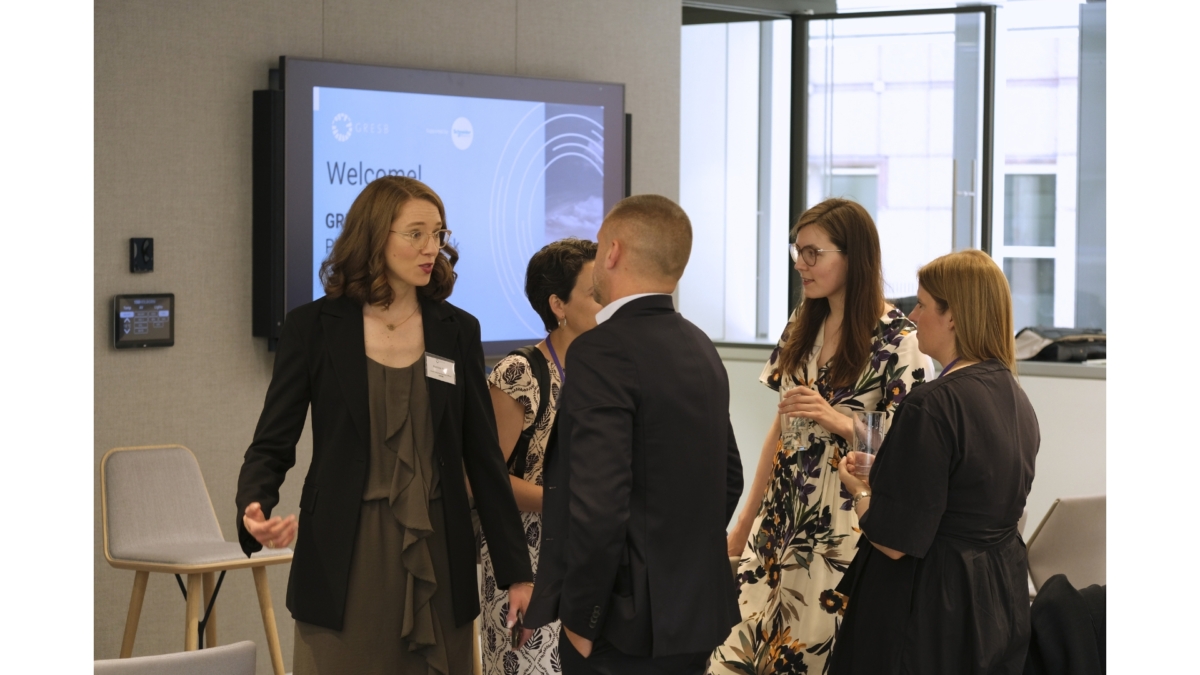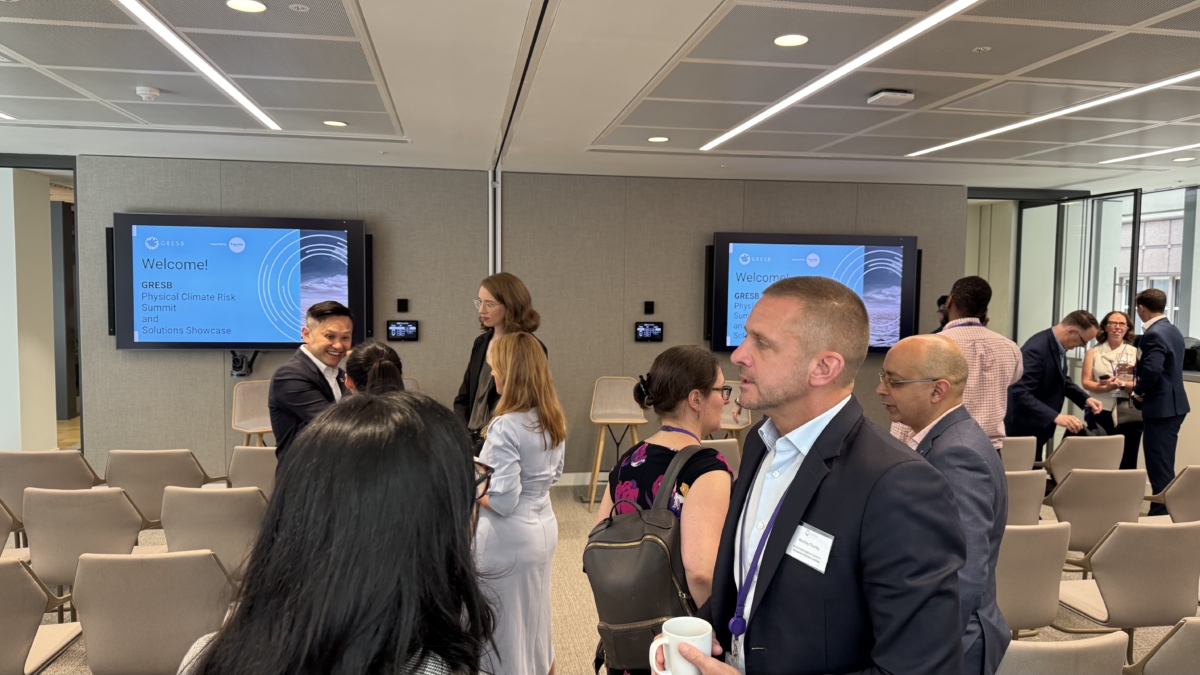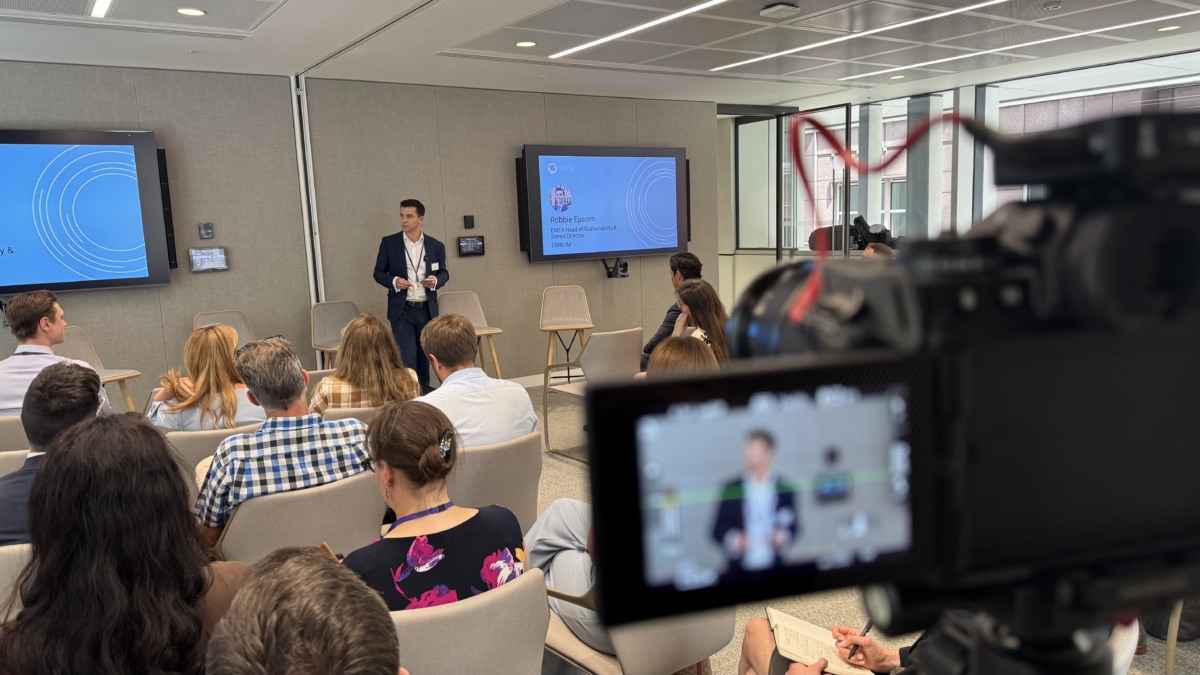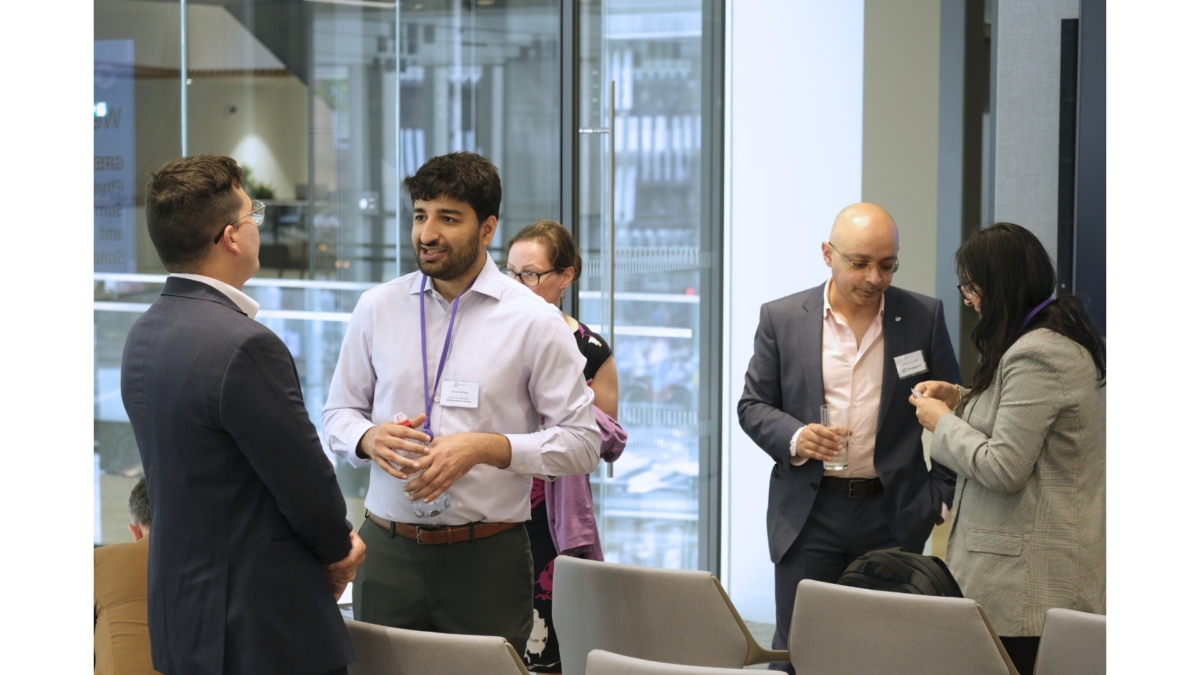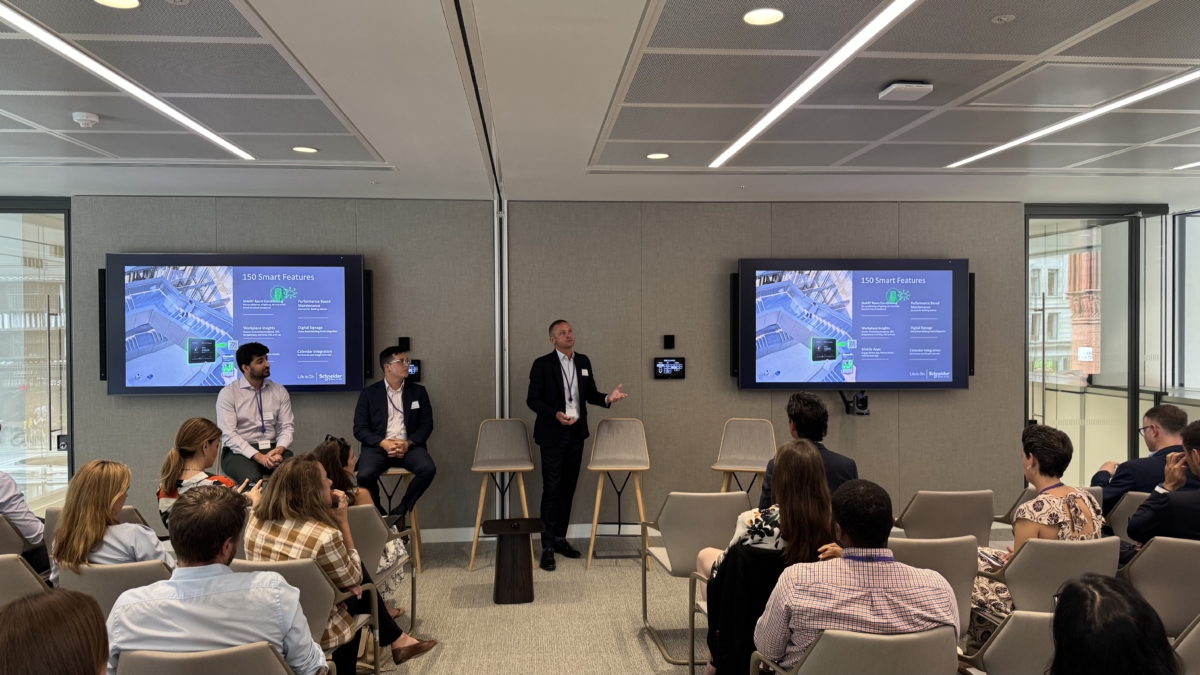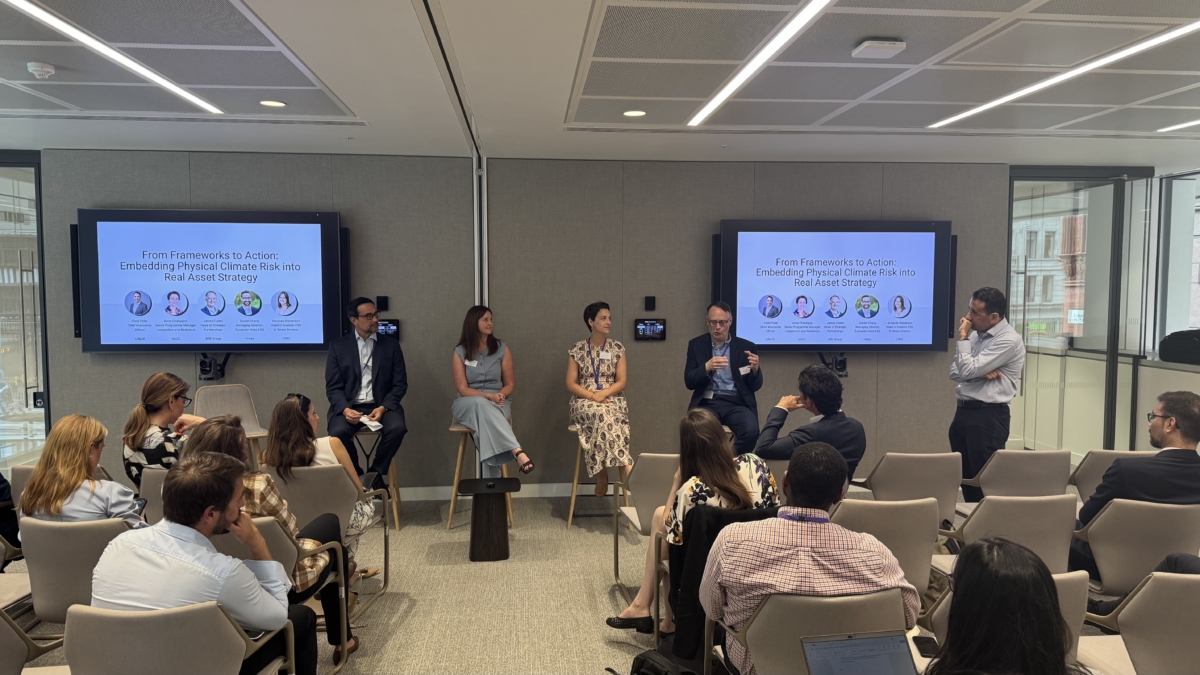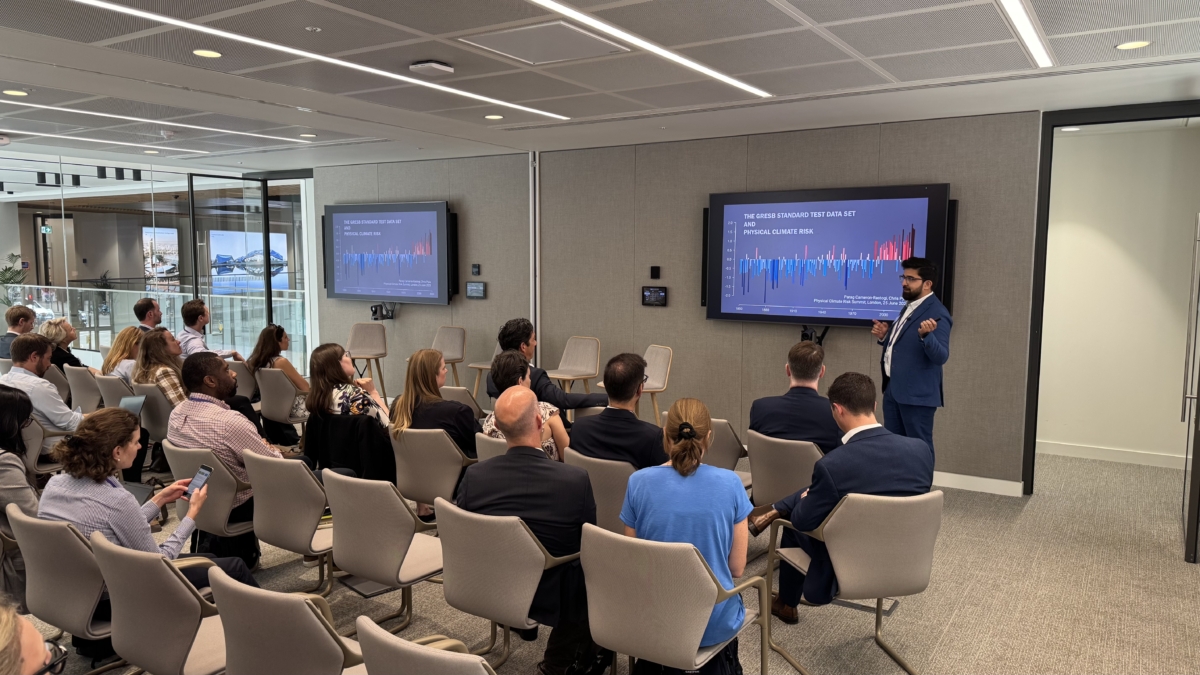On 25 June, GRESB hosted the inaugural Physical Climate Risk Summit and Solution Showcase with support from GRESB Partner, Schneider Electric, at Sidara’s headquarter offices in central London. The half-day session brought together real estate and infrastructure investors, managers, scientists, and solution providers for a focused discussion on one challenge: how to move from frameworks to practical action when it comes to physical climate risk.
Held during London Climate Action Week, the event offered a valuable opportunity for peers to connect, learn from each other, and explore the tools that can help turn risk assessments into real-world investment decisions.
Setting the Stage for Action
The day began with a welcome from Chris Pyke, GRESB’s Chief Innovation Officer, and Parag Cameron-Rastogi, Director of Real Asset Analytics. They opened with a simple message: physical climate risk is now a key consideration for anyone managing real assets—from investors and underwriters to public regulators and insurers. As climate-related losses rise, the need for clear and usable risk insights is growing fast.
To support this, Parag introduced the GRESB Standard Test Dataset, which was used by all five vendors during the solution showcase. The dataset is based on anonymized assets from the GRESB universe and reflects common issues that real-world asset managers face, such as missing or inconsistent information. By using the same input data, participants were able to compare how different tools handle complexity, regional variation, and real-time decision-making.
Later in the program, Robbie Epsom, EMEA Head of Sustainability at CBRE Investment Management, shared how his team is building internal capacity to better understand and act on climate-related physical risk.
He spoke about how CBRE IM has shifted from using risk tools for annual disclosures to using them in everyday decisions—like acquisition, due diligence, and long-term asset management. Explaining how climate resilience is becoming part of how the market defines quality, noting that tools alone aren’t enough—what matters is how they are used.
Together, Parag and Robbie’s remarks set the tone for the day: success depends not only on models, but on building the internal knowledge and collaboration needed to make sense of them.
Vendor showcase
Turning Data into Decisions “At first glance, the idea of aligning sustainability with profit may seem paradoxical,” noted Robbie Epsom in his keynote, “but if you dig deeper, you’ll see that it’s not just a moral imperative, but a compelling business case.” That principle came into focus during the solution showcase, where five providers applied their tools to the same anonymized dataset—offering a rare, side-by-side view into how physical risk modeling translates into real-world investment planning.
Munich Re
Calandra Eckert demonstrated the Location Risk Intelligence platform, grounded in decades of catastrophe modeling. Using the GRESB dataset, the tool offered screening at both site and portfolio level, assessing exposure to 28 physical climate hazards. Attendees were shown how average annual losses can be estimated and how these can be mapped to potential adaptation needs. The demo emphasized integration with EU taxonomy reporting and the ability to identify resilience gaps, such as missing flood adaptation measures.
Correntics
David Lunsford showcased a solution built around bottom-up transparency and control. The tool detects spreadsheet errors, maps real-time storm exposure, and allows filtering of assets based on risk thresholds. He emphasized a chat-based interface that helps users understand risks and generate recommendations. He also discussed how storm events like Hurricane Helen affected hundreds of GRESB-supplied assets and how risk scores were visualized and compared across regions.
ClimateFirst
Hamoda Youssef introduced a component-level method for calculating Climate Value at Risk (CVAR). Their model assesses system-level exposure, adjusted capital planning, and the effectiveness of specific adaptation measures. Two buildings with the same exposure score returned different CVARs based on equipment placement, showing how data granularity drives decision-making. He emphasized the role of existing reports like PCAs in uploading system data and highlighted the platform’s ability to cost and compare adaptation options over time.
XDI
Karl Mallon presented a platform designed for high-resolution adaptation analysis. By using engineering-based thresholds and asset archetypes, XDI assessed building performance under heat, flood, and cyclone stress scenarios. The showcase illustrated how raising floor heights or adjusting design specifications changes exposure scores, and how these shifts are mapped over time. The tool also compared trends across regions, highlighting portfolio hotspots and identifying assets trending toward high-risk classifications.
Intensel
Ashley Hegland presented a global portfolio screening approach tailored for financial users. Starting from a 1,370-asset dataset, the tool narrowed focus to the top 300 assets representing 70% of financial risk. He demonstrated baseline versus residual CVAR outputs and detailed how building data like height and flood adaptation inputs alter loss projections. The platform includes region-specific climate data, particularly in Southeast Asia, and allows users to test interventions and examine mitigation impact side-by-side.
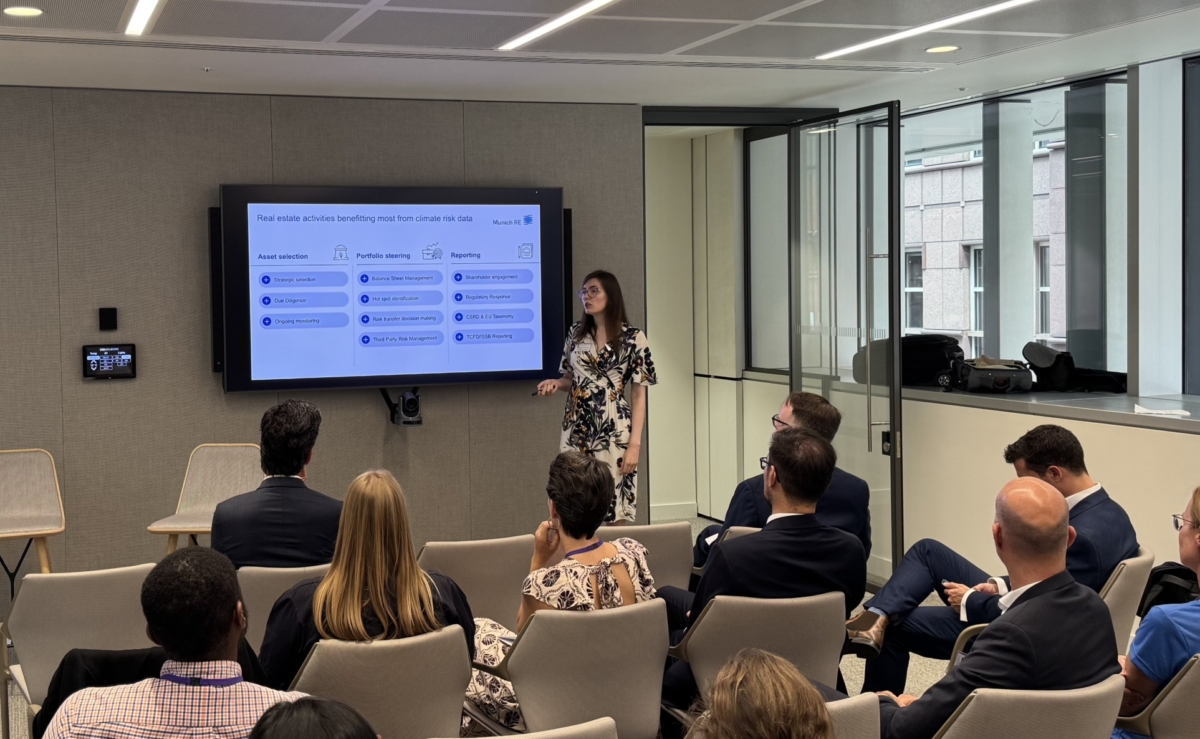
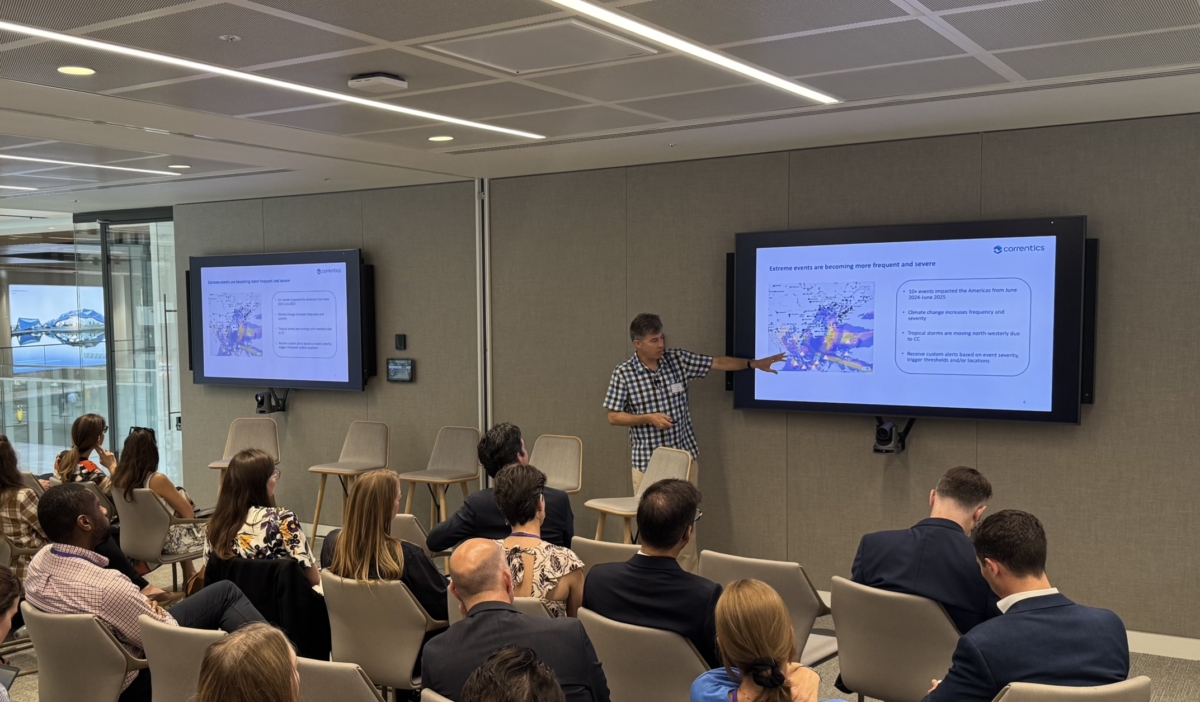
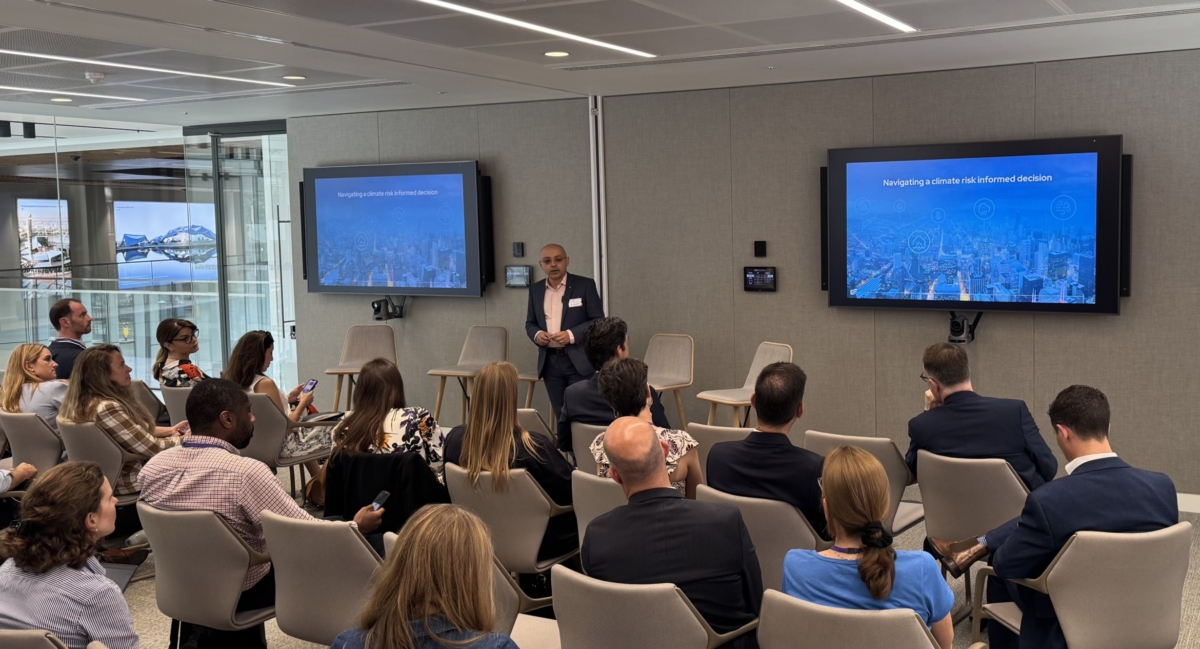
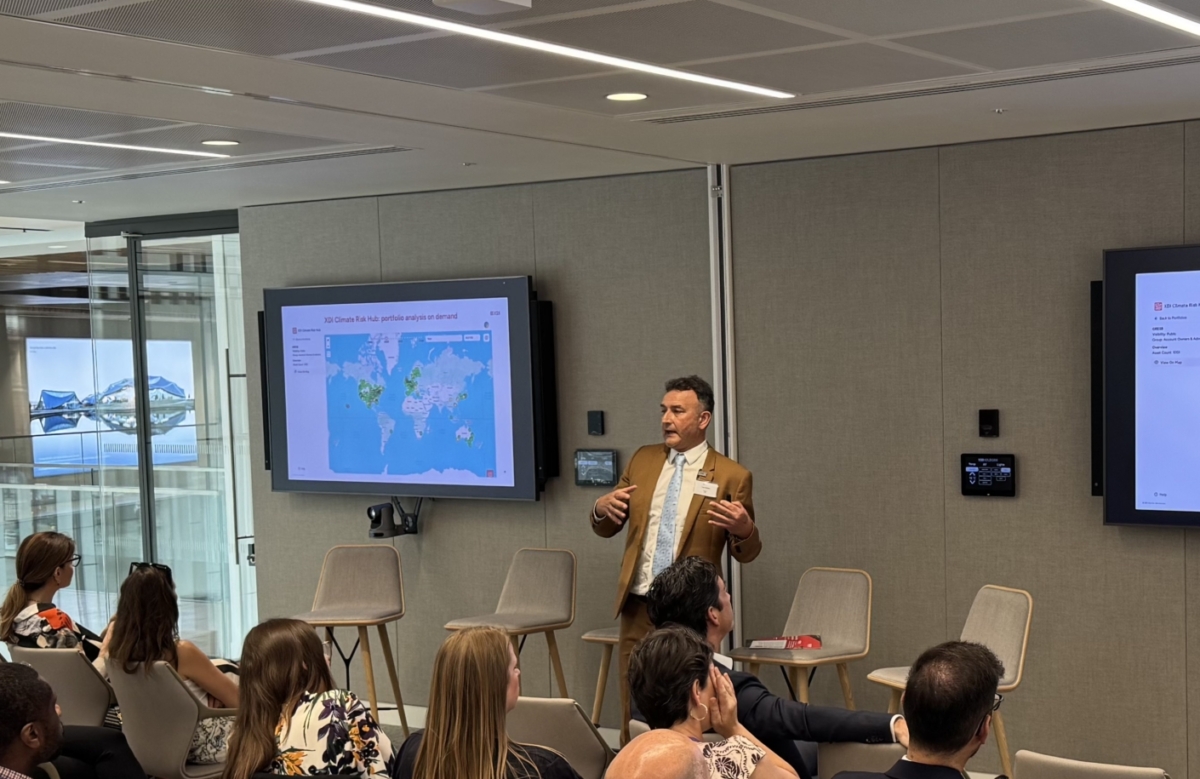
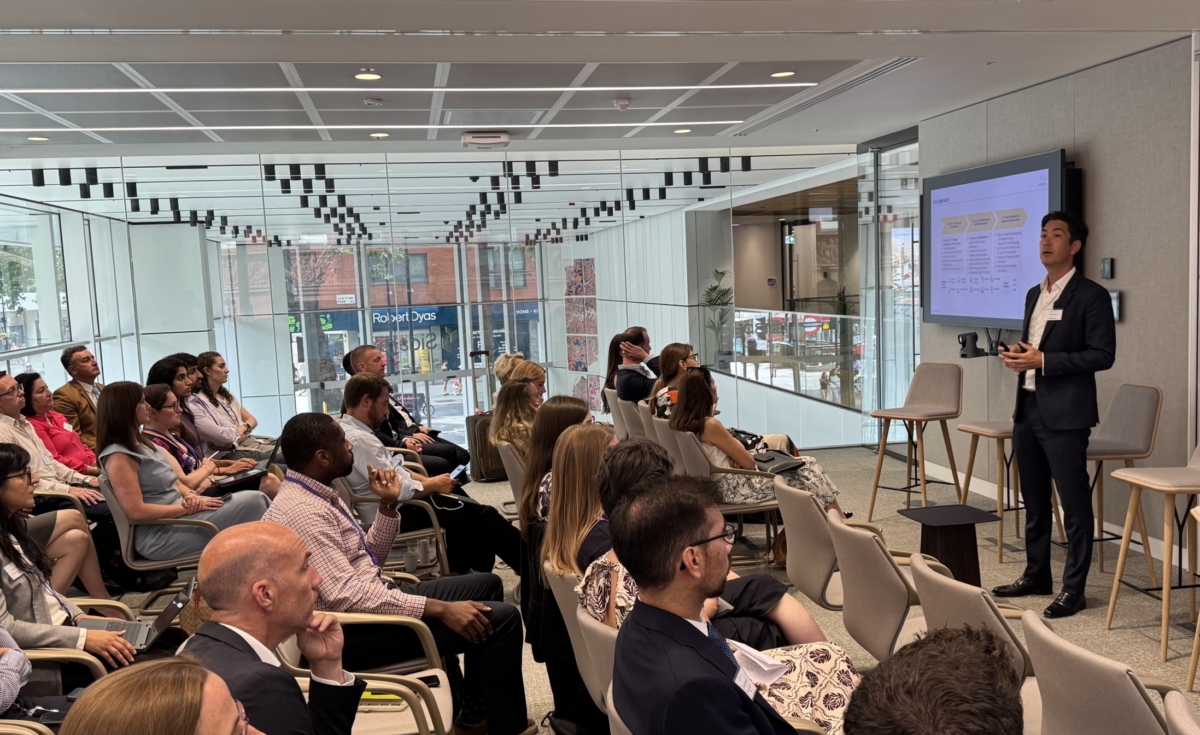
From Frameworks to Action: How Leading Firms Are Embedding Physical Climate Risk
Moderated by GRESB’s Chief Innovation Officer, Chris Pyke, the panel featured:
- Daniel Chang, Hines
- Amanda Stevenson, CBRE
- James Fisher, BRE Group
- Anne Chataigne, IIGCC
Exploring how physical climate risk is being operationalized across the real asset investment ecosystem—from project-level decision-making to industry-wide standards.
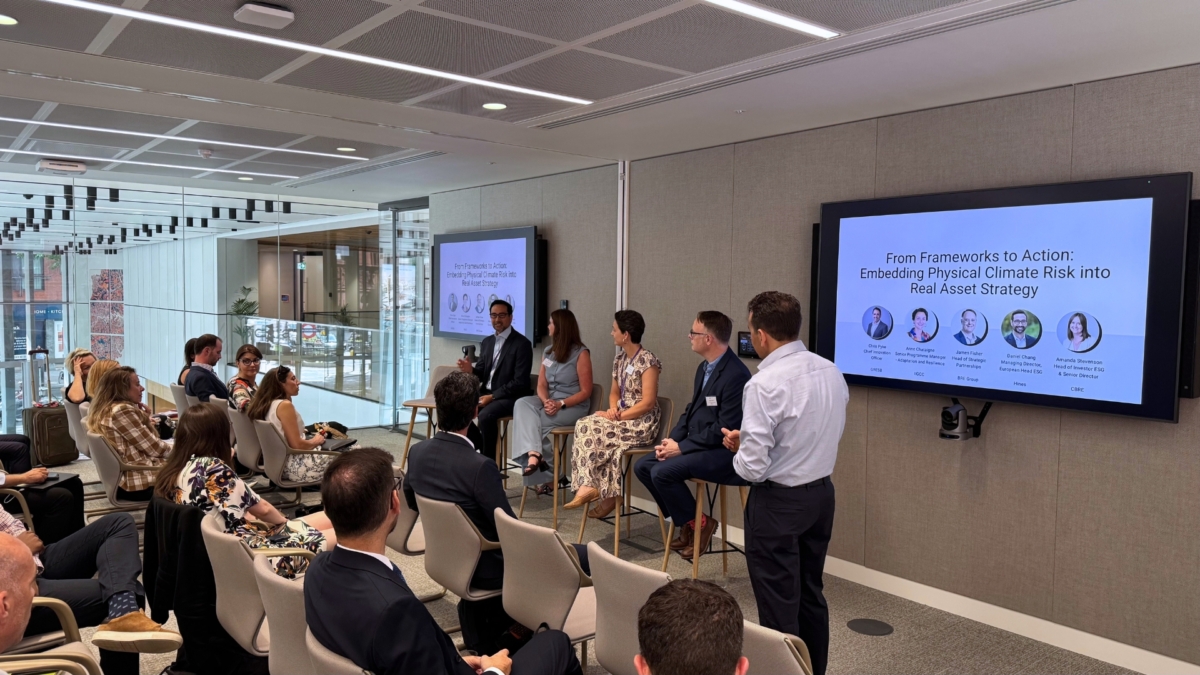
Daniel Chang shared that Hines has institutionalized physical risk analysis by embedding it directly into investment committee materials. These studies are conducted at the acquisition stage and involve multiple internal stakeholders, including sustainability, risk, and investment management teams. This has helped ensure climate risk is systematically evaluated and acted upon, especially given the company’s vertically integrated structure.
Amanda Stevenson emphasized the importance of integrating climate risk into decarbonization roadmaps, warning against allowing physical and transition risk efforts to evolve as isolated strategies. She noted that investor and occupier pressure is uneven across regions, which impacts how and where prioritization takes place. Her advisory experience showed that mature clients are increasingly layering physical risk into financial prioritization models, rather than relying solely on exposure scores.
Anne Chataigne shared how the Investor Group on Climate Change (IIGCC) is helping investors better understand, evaluate, and act on physical climate risk through tools like PCRAM 2.0 and the Climate Resilience Investment Framework (CRIF). She addressed a recurring challenge noted throughout the day: the divergence in risk model outputs, which makes it hard for investors to compare vendors or set consistent expectations.
James Fisher explained how BRE’s BREEAM certification schemes are evolving to incorporate resilience more explicitly, particularly in the forthcoming Version 7. He emphasized that real estate strategies should not treat carbon and resilience as separate agendas, and that certifications must reflect rising investor expectations regarding building performance under climate stress.
The discussion highlighted key tensions: the need for scalable screening tools versus the value of granular, site-specific risk insights; the trade-off between acting with limited data and waiting for standardization; and the importance of aligning risk modeling with both insurance logic and regulatory requirements.
Looking ahead
The day concluded with a rooftop reception and a tour of the Schneider Electric smart building, where guests were able to see some of the day’s key themes—resilience, integration, adaptability—translated into design and operations.
We are grateful to our hosts at Schneider Electric, to our vendor participants for their openness and insight, and to all the GRESB Members and partners who joined us in London.
More than anything, the Summit reinforced what many in the room already knew: advancing physical climate risk integration is a journey, and no single vendor, framework, or firm has all the answers. But together, through transparency and collaboration, we are accelerating the real-world implementation of climate resilience in real assets.
GRESB Partners
GRESB Partners are a key part of our community, helping bring forward comprehensive expertise, practical guidance, and innovative solutions that help accelerate progress and contribute to positive change.
London Solution Providers showcase Gallery

